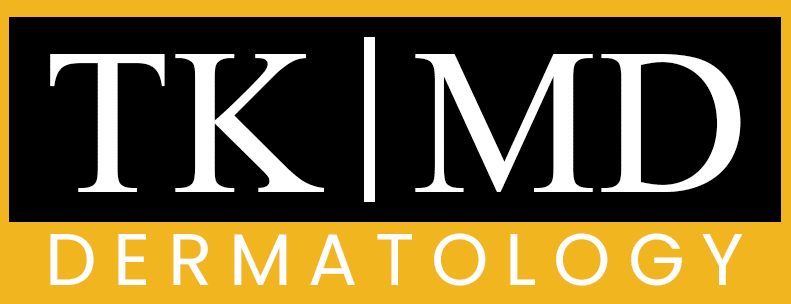A rash is a noticeable change in the texture or color of the skin, often resulting in irritation, inflammation, or discomfort. It can manifest in various forms, including redness, bumps, blisters, or dry patches. Rashes can appear on any part of the body and may vary in size and shape.
They can be localized to a specific area or spread across larger regions of the skin. Understanding what a rash is helps us recognize its significance and the potential underlying issues that may be causing it. Rashes can be temporary or chronic, depending on their cause and the individual’s skin condition.
They may arise from a variety of factors, including allergies, infections, or environmental irritants. While some rashes are harmless and resolve on their own, others may indicate a more serious health concern that requires attention. By familiarizing ourselves with rashes, we can better assess our skin health and take appropriate action when necessary.
Key Takeaways
- A rash is a change in the skin’s color, texture, or appearance that is often accompanied by itching, redness, or swelling.
- Common causes of rashes include allergic reactions, infections, irritants, and underlying health conditions.
- Different types of rashes include eczema, contact dermatitis, heat rash, and psoriasis, each with their own distinct characteristics and triggers.
- Symptoms of rashes can include redness, itching, swelling, blisters, and pain, and may vary depending on the underlying cause.
- Seek medical attention for a rash if it is accompanied by fever, difficulty breathing, swelling of the face or throat, or if it covers a large area of the body.
Common Causes of Rashes
There are numerous factors that can lead to the development of a rash. One of the most common causes is an allergic reaction to substances such as certain foods, medications, or environmental allergens like pollen and pet dander. When our immune system identifies these substances as harmful, it triggers an inflammatory response that manifests as a rash.
This type of rash can vary in severity and may require careful management to avoid future outbreaks. In addition to allergies, infections are another prevalent cause of rashes. Bacterial, viral, and fungal infections can all lead to skin irritation and rashes.
For instance, conditions like chickenpox or shingles are caused by viral infections that result in distinctive rashes. Similarly, bacterial infections such as impetigo can produce red sores and blisters on the skin. Understanding these common causes allows us to identify potential triggers in our environment and take preventive measures.
Different Types of Rashes

Rashes come in various forms, each with its own characteristics and implications. One common type is contact dermatitis, which occurs when the skin comes into direct contact with an irritant or allergen. This type of rash often appears as red, itchy patches and can be triggered by substances like soaps, detergents, or certain metals.
Another prevalent type is eczema, a chronic condition characterized by dry, itchy skin that can flare up due to various factors such as stress or changes in temperature. Psoriasis is another type of rash that we may encounter. It is an autoimmune condition that leads to the rapid growth of skin cells, resulting in thick, scaly patches that can be itchy and painful.
Fungal infections like ringworm also present as rashes, typically appearing as circular red patches with clear centers.
By recognizing these different types of rashes, we can better understand our symptoms and seek appropriate treatment.
Symptoms of Rashes
The symptoms associated with rashes can vary widely depending on their cause and type. Common symptoms include redness, swelling, itching, and discomfort. Some rashes may also produce blisters or pustules that can ooze or crust over.
In certain cases, we might experience additional symptoms such as fever or fatigue if the rash is linked to an underlying infection. Itching is often one of the most bothersome symptoms associated with rashes. It can lead to scratching, which may exacerbate the condition and increase the risk of infection.
In some instances, rashes may also cause pain or tenderness in the affected area. By paying attention to these symptoms, we can better communicate our concerns to healthcare professionals and receive appropriate care.
When to Seek Medical Attention for a Rash
While many rashes are benign and resolve on their own, there are instances when seeking medical attention is crucial. If a rash is accompanied by severe itching, pain, or swelling, it may indicate a more serious condition that requires intervention. Additionally, if we notice signs of infection such as pus, increased warmth in the area, or fever accompanying the rash, it is essential to consult a healthcare provider promptly.
We should also be vigilant if a rash spreads rapidly or does not improve with home care measures. Certain rashes may signal underlying health issues that need to be addressed. For example, rashes associated with systemic conditions like lupus or other autoimmune disorders require thorough evaluation and management.
By recognizing when to seek medical attention, we can ensure our health and well-being are prioritized.
Home Remedies for Rashes

For mild rashes that do not require medical intervention, several home remedies can provide relief and promote healing. One effective approach is to keep the affected area clean and dry while avoiding irritants that may exacerbate the rash. Applying cool compresses can help soothe itching and reduce inflammation.
We might also consider using over-the-counter hydrocortisone cream to alleviate discomfort. Natural remedies such as aloe vera gel or coconut oil can also be beneficial for soothing irritated skin. These substances have anti-inflammatory properties that can help calm redness and promote healing.
Additionally, oatmeal baths are known for their soothing effects on itchy skin conditions. By incorporating these home remedies into our care routine, we can often find relief from mild rashes without resorting to more aggressive treatments.
Over-the-Counter Treatments for Rashes
When home remedies are insufficient for managing a rash, over-the-counter treatments can provide additional relief. Antihistamines are commonly used to alleviate itching associated with allergic reactions and can help us feel more comfortable while waiting for the rash to resolve. Topical corticosteroids are another option; they reduce inflammation and itching when applied directly to the affected area.
Calamine lotion is also a popular choice for soothing rashes caused by poison ivy or insect bites.
It provides a cooling sensation and helps dry out oozing blisters.
We should always read labels carefully and follow instructions when using over-the-counter treatments to ensure safety and effectiveness.
Prescription Treatments for Rashes
In cases where over-the-counter options fail to provide adequate relief or when dealing with more severe rashes, prescription treatments may be necessary. Dermatologists often prescribe stronger topical corticosteroids for inflammatory skin conditions like eczema or psoriasis. These medications can significantly reduce inflammation and promote healing when used as directed.
In some instances, oral medications may be required for more extensive rashes or those linked to systemic conditions. For example, antibiotics may be prescribed for bacterial infections causing rashes, while immunosuppressive drugs might be necessary for autoimmune-related skin issues. Collaborating with healthcare professionals allows us to explore all available treatment options tailored to our specific needs.
Prevention of Rashes
Preventing rashes involves understanding our triggers and taking proactive measures to minimize exposure to irritants or allergens. For those with known allergies, avoiding specific foods or substances is crucial in preventing allergic reactions that lead to rashes. We should also practice good hygiene by keeping our skin clean and moisturized to maintain its barrier function.
Wearing protective clothing when exposed to potential irritants or allergens can also help prevent rashes from developing. For instance, using gloves while handling cleaning products or wearing long sleeves in areas with high pollen counts can reduce our risk of contact dermatitis or allergic reactions. By adopting these preventive strategies, we can significantly decrease our chances of experiencing uncomfortable rashes.
How to Identify if a Rash is Serious
Determining whether a rash is serious requires careful observation of its characteristics and accompanying symptoms. If we notice rapid spreading of the rash or if it appears suddenly without an obvious cause, it may warrant further investigation. Additionally, if the rash is accompanied by systemic symptoms such as fever, chills, or difficulty breathing, we should seek immediate medical attention.
Other red flags include severe pain associated with the rash or signs of infection such as pus or increased warmth in the affected area. If we have underlying health conditions that could complicate a rash—such as diabetes or autoimmune disorders—it’s essential to err on the side of caution and consult a healthcare professional for guidance.
Pictures of Different Types of Rashes
Visual aids play a significant role in understanding different types of rashes and their characteristics. Pictures of various rashes can help us identify our symptoms more accurately and determine whether they align with common conditions like eczema, psoriasis, or contact dermatitis. By comparing our own rash with images from reputable medical sources, we can gain insight into its potential cause and severity.
While pictures are helpful for identification purposes, they should not replace professional medical advice. If we have concerns about a rash’s appearance or progression, consulting a healthcare provider remains the best course of action for accurate diagnosis and treatment recommendations. In conclusion, understanding rashes—what they are, their causes, types, symptoms, and treatment options—empowers us to take charge of our skin health effectively.
By being proactive in prevention and seeking appropriate care when necessary, we can navigate the complexities of skin conditions with confidence and clarity.
If you are interested in learning more about skin conditions like hives, check out this informative article on hives. Understanding different types of rashes and skin issues can help you better care for your skin and seek appropriate treatment when needed. Additionally, if you are experiencing thinning hair and looking for a permanent solution, consider reading about hair transplant for thinning hair. Dr. Trisha Khanna also offers various hair and scalp treatments to help improve the health and appearance of your hair, which you can learn more about in this article on hair and scalp treatments.
FAQs
What are the common causes of rashes?
Rashes can be caused by a variety of factors including allergic reactions, infections, skin irritants, and certain medical conditions.
What are the different types of rashes?
Rashes can be categorized into several types including eczema, contact dermatitis, heat rash, psoriasis, and hives, among others.
What are the symptoms of a rash?
Common symptoms of a rash include redness, itching, swelling, and blistering. The specific symptoms can vary depending on the cause and type of rash.
How are rashes diagnosed?
Rashes are typically diagnosed through a physical examination by a healthcare professional. In some cases, additional tests such as skin biopsies or allergy tests may be required.
What are the treatment options for rashes?
Treatment for rashes depends on the underlying cause and may include over-the-counter or prescription topical creams, oral medications, antihistamines, and avoiding triggers that may exacerbate the rash.
When should I seek medical attention for a rash?
It is important to seek medical attention if a rash is accompanied by severe pain, fever, difficulty breathing, or if it does not improve with over-the-counter treatments. Additionally, if the rash is widespread or affects the face or genitals, medical attention should be sought.


